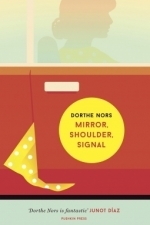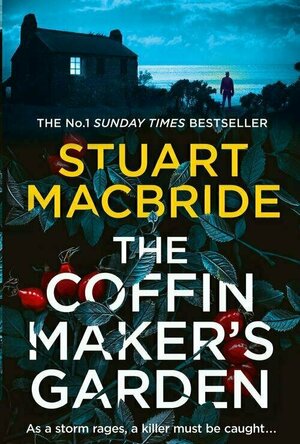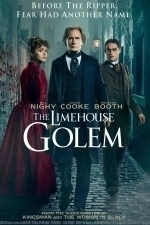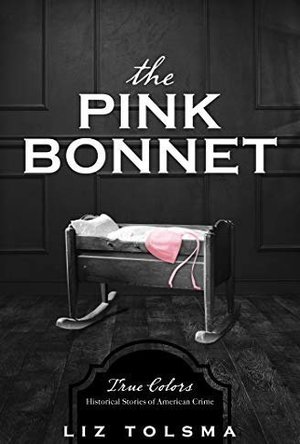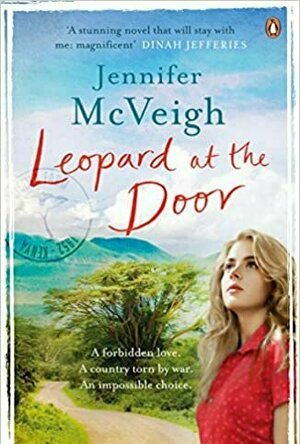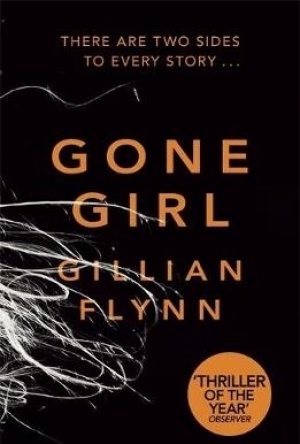Search
Hazel (1853 KP) rated Mirror, Shoulder, Signal in Books
Dec 7, 2018
<i>I received this book for free through Goodreads First Reads.</i>
Shortlisted for The Man Booker International Prize 2017, <i>Mirror, Shoulder, Signal</i> is a piece of Danish literature by Dorthe Nors, translated into English by Misha Hoekstra. It has a tragicomic nature, introducing the 40-year-old Sonja, a woman who is trying but failing to move in the right direction.
Sonja is the type of character full of flaws that readers will recognise in themselves. Although she has successfully become self-employed, translating crime novels from Swedish into Danish, Sonja feels she has not accomplished anything in life. Despite one unlucky attempt at love, Sonja has remained single, moving to Copenhagen in an attempt to find herself. Determined to earn her driving licence Sonja braves the lessons in the busy city, however, she cannot handle gear changes. In other areas of her life, she tries weekly massage therapy and attempts a meditation exercise. Unfortunately, Sonja remains apathetic to the whole scenario and would rather be somewhere warm eating cake.
<i>Mirror, Shoulder, Signal</i> is a cleverly crafted title that makes repeat appearances throughout the narrative. The three words are instructions that Sonja repeats as a mantra each time she pulls away from the curb in her instructor’s car. The majority of the book takes place during these lessons, or, if not there, face down on Ellen’s massage table.
Sonja’s narration constantly varies between the present and memories from her childhood. A particular focus is the recollection of events involving her sister Kate. They may not have been close when they were young, but now it is almost impossible for Sonja to contact her sister. It is as though Sonja has been alienated from her own family.
Embellished with sexual innuendos, poor attempts at humour fail to bring any excitement to the story. There is no clear plot. At the beginning, readers may wonder if she will earn her driver’s licence – she does not – find love – she does not – find herself – she does not. What, then, was the point of this novel? Apart from a suggestion of future happiness in the final chapter of the book, there is no sense of resolution.
The issue with some translated stories is the loss of original intent and meanings. This does not seem to have been much of a problem in this instance; however, the translator has not been entirely successful in converting the Danish into a naturally flowing English.
Overall, <i>Mirror, Shoulder, Signal</i> is a bit of a disappointment, especially because it has been shortlisted for such a prestigious prize. Since the prize is meant to be awarding the author for continued creativity and contribution to fiction, it makes you wonder what critics saw in this novel to believe it stood a chance at earning the honour.
Shortlisted for The Man Booker International Prize 2017, <i>Mirror, Shoulder, Signal</i> is a piece of Danish literature by Dorthe Nors, translated into English by Misha Hoekstra. It has a tragicomic nature, introducing the 40-year-old Sonja, a woman who is trying but failing to move in the right direction.
Sonja is the type of character full of flaws that readers will recognise in themselves. Although she has successfully become self-employed, translating crime novels from Swedish into Danish, Sonja feels she has not accomplished anything in life. Despite one unlucky attempt at love, Sonja has remained single, moving to Copenhagen in an attempt to find herself. Determined to earn her driving licence Sonja braves the lessons in the busy city, however, she cannot handle gear changes. In other areas of her life, she tries weekly massage therapy and attempts a meditation exercise. Unfortunately, Sonja remains apathetic to the whole scenario and would rather be somewhere warm eating cake.
<i>Mirror, Shoulder, Signal</i> is a cleverly crafted title that makes repeat appearances throughout the narrative. The three words are instructions that Sonja repeats as a mantra each time she pulls away from the curb in her instructor’s car. The majority of the book takes place during these lessons, or, if not there, face down on Ellen’s massage table.
Sonja’s narration constantly varies between the present and memories from her childhood. A particular focus is the recollection of events involving her sister Kate. They may not have been close when they were young, but now it is almost impossible for Sonja to contact her sister. It is as though Sonja has been alienated from her own family.
Embellished with sexual innuendos, poor attempts at humour fail to bring any excitement to the story. There is no clear plot. At the beginning, readers may wonder if she will earn her driver’s licence – she does not – find love – she does not – find herself – she does not. What, then, was the point of this novel? Apart from a suggestion of future happiness in the final chapter of the book, there is no sense of resolution.
The issue with some translated stories is the loss of original intent and meanings. This does not seem to have been much of a problem in this instance; however, the translator has not been entirely successful in converting the Danish into a naturally flowing English.
Overall, <i>Mirror, Shoulder, Signal</i> is a bit of a disappointment, especially because it has been shortlisted for such a prestigious prize. Since the prize is meant to be awarding the author for continued creativity and contribution to fiction, it makes you wonder what critics saw in this novel to believe it stood a chance at earning the honour.
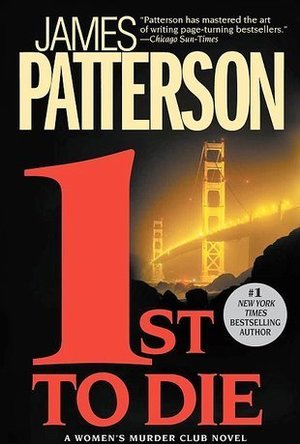
1st to Die (Women's Murder Club, #1)
Book
James Patterson, bestselling author of the Alex Cross novels Along Came a Spider, Kiss the Girls,...
Hazel (2934 KP) rated The Coffinmaker's Garden (Ash Henderson #3) in Books
Jan 17, 2021
I realise that starting to read a series on book 3 is probably not the best idea but having previously read and enjoyed some of Stuart MacBride's Logan McRae series, I thought what the heck and I certainly wasn't disappointed in the slightest and would definitely say this works as a standalone.
What we have here are 2 investigations that are equally disturbing and upsetting - a serial killer who has gone undetected for decades and a child killer who is refining his modus operandi with each innocent life he takes. Ash, in his role as consultant, is involved in both.
The characters are great - Ash, Alice, Mother, Shifty, DS Franklin and even Henry - all of them in fact, some may be a tad OTT or stereotypical but all had their place and their own little quirks which made them believable. The various settings were really well written with the scenes being so well written that they invoked sounds and smells that put me right there.
The book is written mainly from Ash's point of view. He can be a cynical and grumpy so-and-so and definitely doesn't do things by the books and does have questionable decision-making skills at times, but he definitely grew on me; I think it was his dark sense of humour that did it but also his aversion to authority who have been so far removed from the job that they haven't got a clue helped a bit ... oh and the fact that he certainly gets put through the wringer by Mr MacBride during his investigation and from what has obviously gone on in the previous books in the series, which might have had something to do with it too!
With the story lines being as dark as they are, you might think this is a dark and depressing read but fear not, this is not the case at all. Yes, as you can imagine, it's not a laugh a minute and there is quite a lot of violence throughout but there are plenty of lighter moments that will have you laughing out loud. You do have to suspend reality for some parts of the book as there are bits that are a little unbelievable but if you can't do this in a work of fiction, when can you? and it certainly didn't spoil my reading experience.
All in all, a really great book and one I would highly recommend to those of you who love their crime thrillers dark both in the plot and the humour.
Thanks to HarperCollins / HarperFiction and NetGalley for my copy in exchange for an honest, unbiased and unedited review.
What we have here are 2 investigations that are equally disturbing and upsetting - a serial killer who has gone undetected for decades and a child killer who is refining his modus operandi with each innocent life he takes. Ash, in his role as consultant, is involved in both.
The characters are great - Ash, Alice, Mother, Shifty, DS Franklin and even Henry - all of them in fact, some may be a tad OTT or stereotypical but all had their place and their own little quirks which made them believable. The various settings were really well written with the scenes being so well written that they invoked sounds and smells that put me right there.
The book is written mainly from Ash's point of view. He can be a cynical and grumpy so-and-so and definitely doesn't do things by the books and does have questionable decision-making skills at times, but he definitely grew on me; I think it was his dark sense of humour that did it but also his aversion to authority who have been so far removed from the job that they haven't got a clue helped a bit ... oh and the fact that he certainly gets put through the wringer by Mr MacBride during his investigation and from what has obviously gone on in the previous books in the series, which might have had something to do with it too!
With the story lines being as dark as they are, you might think this is a dark and depressing read but fear not, this is not the case at all. Yes, as you can imagine, it's not a laugh a minute and there is quite a lot of violence throughout but there are plenty of lighter moments that will have you laughing out loud. You do have to suspend reality for some parts of the book as there are bits that are a little unbelievable but if you can't do this in a work of fiction, when can you? and it certainly didn't spoil my reading experience.
All in all, a really great book and one I would highly recommend to those of you who love their crime thrillers dark both in the plot and the humour.
Thanks to HarperCollins / HarperFiction and NetGalley for my copy in exchange for an honest, unbiased and unedited review.
Emma @ The Movies (1786 KP) rated The Limehouse Golem (2016) in Movies
Sep 25, 2019
The community of Limehouse in Victorian London have been rocked by a series of murders. They have called the mudered the Golem, as only such a creature could have done these heinous acts.
Elizabeth Cree, the music hall star, has been arrested for the poisoning of her husband John Cree on the same night as the last Golem murder. But when evidence is found by Inspector John Kildare that links John Cree to the murders, he sets about trying to solve both cases so that he might save Elizabeth from hanging for her crime.
Their investigation leads them to an exclusive reading room at the library, and a book on the art of murder. Within its pages are hand written notes chronicling the Golem murders to date. Only four men entered the reading room when the last entry was made; Dan Leno, Karl Marx, George Gissing and John Cree. Can the inspector eliminate the other three men and prove Cree is the Golem in order to save Elizabeth?
I was looking forward to this one. Some top actors were involved, and I love a bit of Victorian era murder. The film itself was good throughout, I can't fault it for the scenery and acting.
But...
Those of you that know me, know that I don't think about films. I'm sure I keep saying this. I watch them to have some fun, to escape reality, so what's the point in picking apart something that's made as a fiction to entertain you?
Even with me suspending my brain function for the duration of the film, I paused and thought... oh, this is what's going to happen... and it did. It felt a bit cliche, like the twist had been overused in every film like this that I'd seen. I don't think it was designed that way though. There was a clear moment in the film where they want you to know what is happening, but the realisation of the ending cam much earlier than this. And it was disappointing. I was enjoying the film a lot until I realised what was coming. Talking to my movie buddy I discovered that I wasn't the only one who had this feeling. It's such a shame, but the twist felt so obvious to me that I was suddenly very disappointed.
I have taken to looking at Rotten Tomatoes after seeing a film, and this one is currently sitting at 77% with critics and 61% with the audience. I'd say that's about right. I've left the major spoiler out of here, but if you're familiar with this sort of story then I don't think you'd be hard pressed to work it out. It is an excellent film in it's genre, but it was let down, for me, by the obvious direction it went in.
Elizabeth Cree, the music hall star, has been arrested for the poisoning of her husband John Cree on the same night as the last Golem murder. But when evidence is found by Inspector John Kildare that links John Cree to the murders, he sets about trying to solve both cases so that he might save Elizabeth from hanging for her crime.
Their investigation leads them to an exclusive reading room at the library, and a book on the art of murder. Within its pages are hand written notes chronicling the Golem murders to date. Only four men entered the reading room when the last entry was made; Dan Leno, Karl Marx, George Gissing and John Cree. Can the inspector eliminate the other three men and prove Cree is the Golem in order to save Elizabeth?
I was looking forward to this one. Some top actors were involved, and I love a bit of Victorian era murder. The film itself was good throughout, I can't fault it for the scenery and acting.
But...
Those of you that know me, know that I don't think about films. I'm sure I keep saying this. I watch them to have some fun, to escape reality, so what's the point in picking apart something that's made as a fiction to entertain you?
Even with me suspending my brain function for the duration of the film, I paused and thought... oh, this is what's going to happen... and it did. It felt a bit cliche, like the twist had been overused in every film like this that I'd seen. I don't think it was designed that way though. There was a clear moment in the film where they want you to know what is happening, but the realisation of the ending cam much earlier than this. And it was disappointing. I was enjoying the film a lot until I realised what was coming. Talking to my movie buddy I discovered that I wasn't the only one who had this feeling. It's such a shame, but the twist felt so obvious to me that I was suddenly very disappointed.
I have taken to looking at Rotten Tomatoes after seeing a film, and this one is currently sitting at 77% with critics and 61% with the audience. I'd say that's about right. I've left the major spoiler out of here, but if you're familiar with this sort of story then I don't think you'd be hard pressed to work it out. It is an excellent film in it's genre, but it was let down, for me, by the obvious direction it went in.
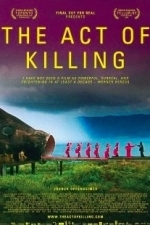
The Act Of Killing (2012)
Movie Watch
Anwar Congo and his friends have been dancing their way through musical numbers, twisting arms in...
Hazel (1853 KP) rated The Followers in Books
Dec 17, 2018
My rating: 3.5
<i>I received this book for free through Goodreads First Reads.
The Followers</i> is the compelling second novel of the British author Rebecca Wait. Stephanie is living a mundane life with her daughter, making what little money she can at a local coffee shop. But then she meets Nathaniel, a man who says he wants to love her, look after her and make her happy. Stephanie and Judith move in with Nathaniel at a place known as the Ark, with a bunch of other people who are part of a religious cult. Nathaniel, who proclaims himself as a prophet, is determined for Stephanie to forget about her past and turn herself to God. Judith, however, is not so easy to persuade. However a turn of events raise questions as to whether Nathaniel should really be trusted.
The story begins with Stephanie in prison where she is serving her sentence for a crime the reader has no knowledge of. It then switches between “before” and “after” with “before” being when Stephanie meets Nathaniel and “after” involving the prison scenes. From the very start the reader knows something bad is going to happen, that Stephanie is going to break a law bad enough for her to be imprisoned. The following chapters keep readers guessing what exactly that offence would be.
The novel gets darker and darker as the truth about the running of the Ark is revealed. With violence and punishments being doled out, Nathaniel is no longer the man he originally appeared. As the book climaxes it is shocking when the reader realizes what it is that Stephanie is going to do.
As well as Judith there are other children living in the Ark, but the difference is they were born there and have known nothing else except doing things in the name of God. Judith on the other hand was not sheltered from the “evils” of the outside world and thus has a different opinion about the way Nathaniel treats his followers. As it turns out, Judith is right to distrust the ways of this man, but there is nothing she can do about her situation.
Although containing a strong religious theme, <i>The Followers</i> is not a piece of Christian fiction. The behaviour of Nathaniel and the members of the Ark does not reflect the average Christian, and everyone, whether religious or not, will be shocked by the happenings in this book.
It took a while to get into the storyline and the first few chapters did not feel particularly well written, however readers will quickly be sucked into the plot and will want to keep reading to find out what happens. <i>The Followers</i> is not a happy story and there are a few sad and distressing scenes, which make the reader really feel for some of the characters. Overall it is a very interesting read.
<i>I received this book for free through Goodreads First Reads.
The Followers</i> is the compelling second novel of the British author Rebecca Wait. Stephanie is living a mundane life with her daughter, making what little money she can at a local coffee shop. But then she meets Nathaniel, a man who says he wants to love her, look after her and make her happy. Stephanie and Judith move in with Nathaniel at a place known as the Ark, with a bunch of other people who are part of a religious cult. Nathaniel, who proclaims himself as a prophet, is determined for Stephanie to forget about her past and turn herself to God. Judith, however, is not so easy to persuade. However a turn of events raise questions as to whether Nathaniel should really be trusted.
The story begins with Stephanie in prison where she is serving her sentence for a crime the reader has no knowledge of. It then switches between “before” and “after” with “before” being when Stephanie meets Nathaniel and “after” involving the prison scenes. From the very start the reader knows something bad is going to happen, that Stephanie is going to break a law bad enough for her to be imprisoned. The following chapters keep readers guessing what exactly that offence would be.
The novel gets darker and darker as the truth about the running of the Ark is revealed. With violence and punishments being doled out, Nathaniel is no longer the man he originally appeared. As the book climaxes it is shocking when the reader realizes what it is that Stephanie is going to do.
As well as Judith there are other children living in the Ark, but the difference is they were born there and have known nothing else except doing things in the name of God. Judith on the other hand was not sheltered from the “evils” of the outside world and thus has a different opinion about the way Nathaniel treats his followers. As it turns out, Judith is right to distrust the ways of this man, but there is nothing she can do about her situation.
Although containing a strong religious theme, <i>The Followers</i> is not a piece of Christian fiction. The behaviour of Nathaniel and the members of the Ark does not reflect the average Christian, and everyone, whether religious or not, will be shocked by the happenings in this book.
It took a while to get into the storyline and the first few chapters did not feel particularly well written, however readers will quickly be sucked into the plot and will want to keep reading to find out what happens. <i>The Followers</i> is not a happy story and there are a few sad and distressing scenes, which make the reader really feel for some of the characters. Overall it is a very interesting read.
Whatchareadin (174 KP) rated The Pink Bonnet: True Colors in Books
Jul 2, 2019
Cecile Dowd is a single mother, just trying to keep life together in 1933 for her and her three year old daughter Millie. Cecile is a widow and it's the great depression. Without her husband, it's difficult to always control Millie's behavior and make sure there is enough food on the table. Cecile decides she needs to get another job to help make things easier. While she goes out looking, she leaves Millie with a neighbor. When she returns to pick up Millie at the end of the day, Millie is gone. The neighbor says, that Cecile can't handle the child and has given her to someone who can help, Georgia Tann the head of the Tennessee Children's Home. They "help" parents find loving families for their children. But Cecile didn't ask for this and neither did a lot of other parents. Ms. Tann is taking children from parents she deems unfit and sending them to other families in the area. Ms. Tann has most of the Tennessee government in her back pocket and no matter who Cecile goes to for help, it's to no avail. Will she be able to find Millie before she's gone forever? With people trying to stop her at every turn, Cecile is determined, no matter what the cost.
Thank you to NetGalley and Barbour Publishing for the opportunity to read and review this book.
This book is based on a true story. Georgia Tann was a real woman who really ran an adoption agency in Tennessee for over 25 years. During her tenure, it is believed that approximately 5,000 children were taken unwillingly from their parents and sold in adoptions to whoever would pay the highest price.
This book hit my heart hard. I can't imagine what I would do, if I left my child with a friend or neighbor for a little bit and then when I came back they had forged my name on documents to allow my child to be taken for adoption. Or if they were just snatched from the street on their way home from school. This was happening to hundreds of families during the depression. People were doing anything they could to make ends meet, but for Georgia Tann that didn't matter. One parent should be with the child at all times. That is the only way to show that you really love and are able to take care of the child.
I would love to read more about this lady. I hope there was a warm seat in hell waiting for her and all her cohorts when she passed away. Throughout the story, you can feel the love for Millie that Cecile has and she risks her life and the lives of those that are helping her in order to get to her daughter. No matter what she does, though it never seems like enough, Millie is always just beyond her grasp.
If you like historical, true crime fiction, you will enjoy this book.
Thank you to NetGalley and Barbour Publishing for the opportunity to read and review this book.
This book is based on a true story. Georgia Tann was a real woman who really ran an adoption agency in Tennessee for over 25 years. During her tenure, it is believed that approximately 5,000 children were taken unwillingly from their parents and sold in adoptions to whoever would pay the highest price.
This book hit my heart hard. I can't imagine what I would do, if I left my child with a friend or neighbor for a little bit and then when I came back they had forged my name on documents to allow my child to be taken for adoption. Or if they were just snatched from the street on their way home from school. This was happening to hundreds of families during the depression. People were doing anything they could to make ends meet, but for Georgia Tann that didn't matter. One parent should be with the child at all times. That is the only way to show that you really love and are able to take care of the child.
I would love to read more about this lady. I hope there was a warm seat in hell waiting for her and all her cohorts when she passed away. Throughout the story, you can feel the love for Millie that Cecile has and she risks her life and the lives of those that are helping her in order to get to her daughter. No matter what she does, though it never seems like enough, Millie is always just beyond her grasp.
If you like historical, true crime fiction, you will enjoy this book.
BookInspector (124 KP) rated Leopard at the Door in Books
Sep 24, 2020
More reviews at https://bbookinspector.wordpress.com
My favourite genre to read normally is mystery, crime or thrillers, but I try to choose different genres from time to time. I need to rest from investigations and murders, that’s where historical fiction, YA and other books come in. This book is no exception; I needed something to clear my mind, and it really done the job.
Let me begin by saying, that I loved the environment used in this book. Author portrayed the surroundings and places in this book with great detail, and made me actually feel the African spirit. So, all her travels through Africa, really helped her to describe what she felt to the reader.
The main character in this book was Rachel, and she was the one to share her life with a reader. This novel had a huge variety of very diverse characters, some of them positive and dear to the heart, and some of them really negative, which made me really angry about them. Unfortunately, I did not have any favourite character in this book, as I felt they were not fully developed and opened up to the reader. I would’ve liked to read different perspectives and have more insight into different personalities. Even though I really tried to like Rachel’s rebellious views and kind heart, I think some of her decisions were really silly and disappointing.
The narrative of this novel starts in 1952, when British Empire is on a verge of collapsing, and Kenya wishes its independence. I absolutely adored all the details about Mau Mau, their ideology and ways of action. I loved Michael’s thoughts about war and his country’s independence. I think, this book was really well researched and the whole spirit of the book was shared just gorgeously. The whole story was flowing very smoothly, with some turns and twists, which kept me interested. There was a great love story going on in this book, but I would’ve liked it to be a bit more passionate than it was. Author discussed some interesting topics in this book, such as: Life after mother’s death and relationship with a stepmother; feelings, when you don’t have anyone to turn to; love and betrayal.
The writing style of this novel was not difficult to read, but it contains some African words, which were explained at the end of the book. (If you read it on Kindle, it’s not very helpful) The chapters of this book have decent length, but it might drag a little, because there is not much action going on in this novel. The ending was quite interesting and done the justice to the book and Rachel, but still left me questioning about “What happened to Michael?” So, overall, I actually enjoyed this story of wish for independence, unexpected love, family difficulties and betrayal, and I would recommend immersing yourself into this beautiful Kenyan setting.
Was given this book by publisher and NetGalley for honest review.
My favourite genre to read normally is mystery, crime or thrillers, but I try to choose different genres from time to time. I need to rest from investigations and murders, that’s where historical fiction, YA and other books come in. This book is no exception; I needed something to clear my mind, and it really done the job.
Let me begin by saying, that I loved the environment used in this book. Author portrayed the surroundings and places in this book with great detail, and made me actually feel the African spirit. So, all her travels through Africa, really helped her to describe what she felt to the reader.
The main character in this book was Rachel, and she was the one to share her life with a reader. This novel had a huge variety of very diverse characters, some of them positive and dear to the heart, and some of them really negative, which made me really angry about them. Unfortunately, I did not have any favourite character in this book, as I felt they were not fully developed and opened up to the reader. I would’ve liked to read different perspectives and have more insight into different personalities. Even though I really tried to like Rachel’s rebellious views and kind heart, I think some of her decisions were really silly and disappointing.
The narrative of this novel starts in 1952, when British Empire is on a verge of collapsing, and Kenya wishes its independence. I absolutely adored all the details about Mau Mau, their ideology and ways of action. I loved Michael’s thoughts about war and his country’s independence. I think, this book was really well researched and the whole spirit of the book was shared just gorgeously. The whole story was flowing very smoothly, with some turns and twists, which kept me interested. There was a great love story going on in this book, but I would’ve liked it to be a bit more passionate than it was. Author discussed some interesting topics in this book, such as: Life after mother’s death and relationship with a stepmother; feelings, when you don’t have anyone to turn to; love and betrayal.
The writing style of this novel was not difficult to read, but it contains some African words, which were explained at the end of the book. (If you read it on Kindle, it’s not very helpful) The chapters of this book have decent length, but it might drag a little, because there is not much action going on in this novel. The ending was quite interesting and done the justice to the book and Rachel, but still left me questioning about “What happened to Michael?” So, overall, I actually enjoyed this story of wish for independence, unexpected love, family difficulties and betrayal, and I would recommend immersing yourself into this beautiful Kenyan setting.
Was given this book by publisher and NetGalley for honest review.
Seriously Messed Up
“Thriller of the year” according to Observer; it makes you wonder what all the other thrillers were like. Gone Girl is a contemporary crime thriller by American author Gillian Flynn. Likable “Cool Girl” Amy Dunne is missing; the police think her husband has something to do with it, but what really happened?
Flynn begins the novel with an epigraph: “Love is the world’s infinite mutability; lies, hatred, murder even, are all knit up in it; it is the inevitable blossoming of its opposites, a magnificent rose smelling faintly of blood.” – Tony Kushner, The Illusion. This implies that love and hate, and perhaps murder, will be the main issues within the novel. It hints that relationships may not be all that they first appear, which becomes evident as you read deeper into the book.
Split into three parts, the first section alternates between a first person account from Nick Dunne, the husband, of what is occurring on the day in which Amy disappears and the following days when both he and the police are attempting to determine the truth about what has happened and trying to find out where Amy is; and diary entries from Amy dating as far back as 2005.
To begin with I did not think much of the story and did not particularly like Amy, despite her being portrayed as a likable character; however I soon got into the story siding with Nick and wanting him to be innocent even though evidence and suspicion were mounting against him.
Initially I assumed that the truth would not be revealed until the end of the story rather than on the first page of part two. For the remainder of the book Nick’s narrative remains the same, progressing from where it left off at the end of part one; whereas Amy, instead of diary entries, she is telling the reader the truth about what happened on the 5th July – the day she went missing – and the subsequent days and weeks. At this point I became a bit bored with the story; as the reader we know the truth and it is frustrating that the police are getting it wrong. However part three contained more suspense than the rest of the novel.
So, why only three stars? As I already mentioned it did not seem that great at the beginning and to be honest I did not feel satisfied with the ending either. One of the main things that bothered me was the use of swear words. I understand that many people swear and so it is inevitable that these words would end up in novels; however in my opinion there is swearing and then there is swearing. This was beginning to border on the latter. Yes some of the characters were angry but I thought the use of expletives was slightly overdone.
Despite these misgivings it was a well-written piece of fiction that I think others may enjoy – the ratings on Goodreads certainly suggest that; but for me it was not anything special.
Flynn begins the novel with an epigraph: “Love is the world’s infinite mutability; lies, hatred, murder even, are all knit up in it; it is the inevitable blossoming of its opposites, a magnificent rose smelling faintly of blood.” – Tony Kushner, The Illusion. This implies that love and hate, and perhaps murder, will be the main issues within the novel. It hints that relationships may not be all that they first appear, which becomes evident as you read deeper into the book.
Split into three parts, the first section alternates between a first person account from Nick Dunne, the husband, of what is occurring on the day in which Amy disappears and the following days when both he and the police are attempting to determine the truth about what has happened and trying to find out where Amy is; and diary entries from Amy dating as far back as 2005.
To begin with I did not think much of the story and did not particularly like Amy, despite her being portrayed as a likable character; however I soon got into the story siding with Nick and wanting him to be innocent even though evidence and suspicion were mounting against him.
Initially I assumed that the truth would not be revealed until the end of the story rather than on the first page of part two. For the remainder of the book Nick’s narrative remains the same, progressing from where it left off at the end of part one; whereas Amy, instead of diary entries, she is telling the reader the truth about what happened on the 5th July – the day she went missing – and the subsequent days and weeks. At this point I became a bit bored with the story; as the reader we know the truth and it is frustrating that the police are getting it wrong. However part three contained more suspense than the rest of the novel.
So, why only three stars? As I already mentioned it did not seem that great at the beginning and to be honest I did not feel satisfied with the ending either. One of the main things that bothered me was the use of swear words. I understand that many people swear and so it is inevitable that these words would end up in novels; however in my opinion there is swearing and then there is swearing. This was beginning to border on the latter. Yes some of the characters were angry but I thought the use of expletives was slightly overdone.
Despite these misgivings it was a well-written piece of fiction that I think others may enjoy – the ratings on Goodreads certainly suggest that; but for me it was not anything special.
“Thriller of the year” according to <i>Observer</i>; it makes you wonder what all the other thrillers were like. <i>Gone Girl</i> is a contemporary crime thriller by American author Gillian Flynn. Likable “Cool Girl” Amy Dunne is missing; the police think her husband has something to do with it, but what really happened?
Flynn begins the novel with an epigraph: “Love is the world’s infinite mutability; lies, hatred, murder even, are all knit up in it; it is the inevitable blossoming of its opposites, a magnificent rose smelling faintly of blood.” – Tony Kushner, <i>The Illusion</i>. This implies that love and hate, and perhaps murder, will be the main issues within the novel. It hints that relationships may not be all that they first appear, which becomes evident as you read deeper into the book.
Split into three parts, the first section alternates between a first person account from Nick Dunne, the husband, of what is occurring on the day in which Amy disappears and the following days when both he and the police are attempting to determine the truth about what has happened and trying to find out where Amy is; and diary entries from Amy dating as far back as 2005.
To begin with I did not think much of the story and did not particularly like Amy, despite her being portrayed as a likable character; however I soon got into the story siding with Nick and wanting him to be innocent even though evidence and suspicion were mounting against him.
Initially I assumed that the truth would not be revealed until the end of the story rather than on the first page of part two. For the remainder of the book Nick’s narrative remains the same, progressing from where it left off at the end of part one; whereas Amy, instead of diary entries, she is telling the reader the truth about what happened on the 5th July – the day she went missing – and the subsequent days and weeks. At this point I became a bit bored with the story; as the reader we know the truth and it is frustrating that the police are getting it wrong. However part three contained more suspense than the rest of the novel.
So, why only three stars? As I already mentioned it did not seem that great at the beginning and to be honest I did not feel satisfied with the ending either. One of the main things that bothered me was the use of swear words. I understand that many people swear and so it is inevitable that these words would end up in novels; however in my opinion there is swearing and then there is <i>swearing</i>. This was beginning to border on the latter. Yes some of the characters were angry but I thought the use of expletives was slightly overdone.
Despite these misgivings it was a well-written piece of fiction that I think others may enjoy – the ratings on <i>Goodreads</i> certainly suggest that; but for me it was not anything special.
Flynn begins the novel with an epigraph: “Love is the world’s infinite mutability; lies, hatred, murder even, are all knit up in it; it is the inevitable blossoming of its opposites, a magnificent rose smelling faintly of blood.” – Tony Kushner, <i>The Illusion</i>. This implies that love and hate, and perhaps murder, will be the main issues within the novel. It hints that relationships may not be all that they first appear, which becomes evident as you read deeper into the book.
Split into three parts, the first section alternates between a first person account from Nick Dunne, the husband, of what is occurring on the day in which Amy disappears and the following days when both he and the police are attempting to determine the truth about what has happened and trying to find out where Amy is; and diary entries from Amy dating as far back as 2005.
To begin with I did not think much of the story and did not particularly like Amy, despite her being portrayed as a likable character; however I soon got into the story siding with Nick and wanting him to be innocent even though evidence and suspicion were mounting against him.
Initially I assumed that the truth would not be revealed until the end of the story rather than on the first page of part two. For the remainder of the book Nick’s narrative remains the same, progressing from where it left off at the end of part one; whereas Amy, instead of diary entries, she is telling the reader the truth about what happened on the 5th July – the day she went missing – and the subsequent days and weeks. At this point I became a bit bored with the story; as the reader we know the truth and it is frustrating that the police are getting it wrong. However part three contained more suspense than the rest of the novel.
So, why only three stars? As I already mentioned it did not seem that great at the beginning and to be honest I did not feel satisfied with the ending either. One of the main things that bothered me was the use of swear words. I understand that many people swear and so it is inevitable that these words would end up in novels; however in my opinion there is swearing and then there is <i>swearing</i>. This was beginning to border on the latter. Yes some of the characters were angry but I thought the use of expletives was slightly overdone.
Despite these misgivings it was a well-written piece of fiction that I think others may enjoy – the ratings on <i>Goodreads</i> certainly suggest that; but for me it was not anything special.
